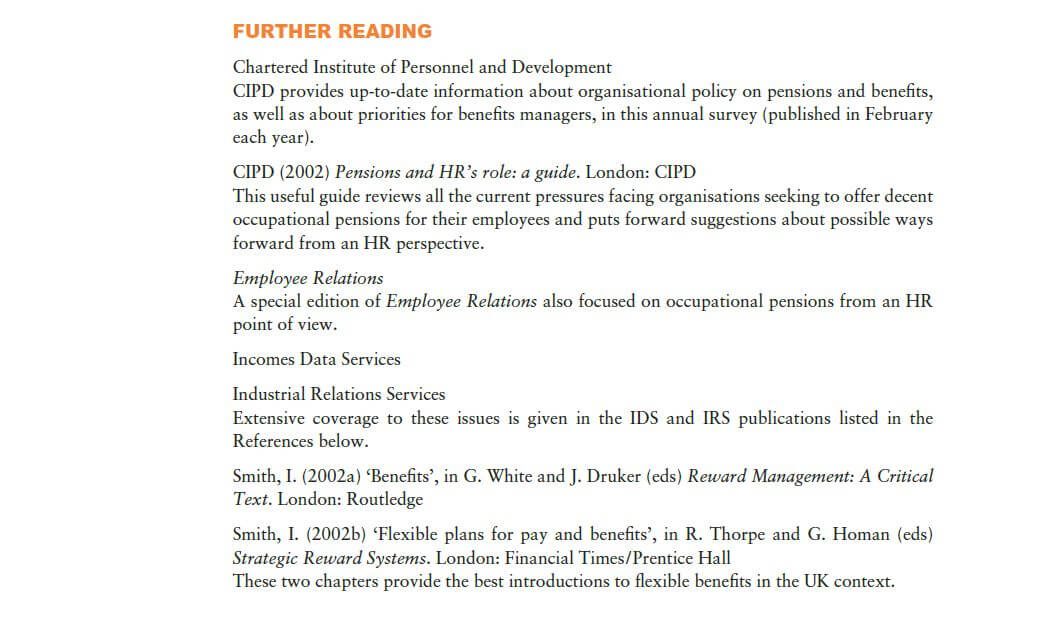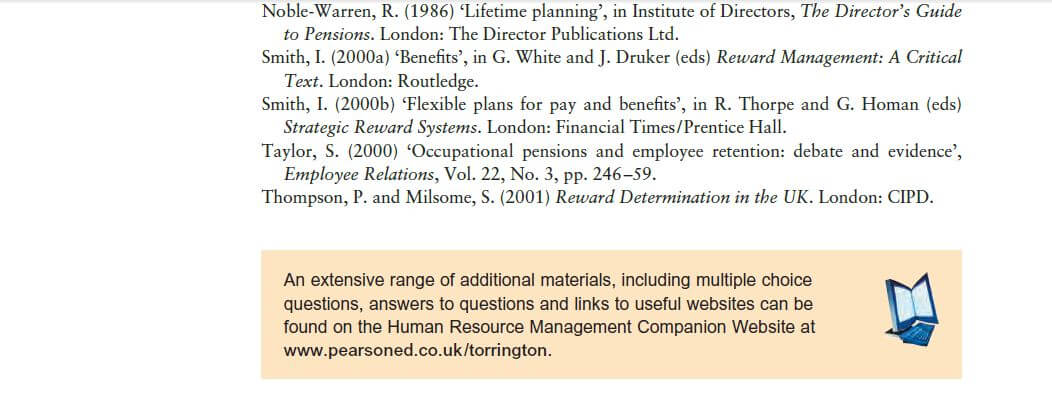Flexible benefits, what are otherwise known as ‘ cafeteria plans’, has a slow growth in the UK as an idea (Smith 2000b, p.379), unlike in the USA where it has escalated over the recent years, thus finding an explicit recognition in the tax schemes. While a commendable number of high profile organizations have favored greater flexibility, it has expanded the case for others to do the same.Although the employer confirms the overall worth of the package, it is but for employees to decide for themselves what equity they accept to select between the various kinds of benefits and cash offered.
However, individual employees are offered a choice; in the case of such flexibility as to how exactly their pay package is composed. This is because everyone has different preferences and likings for various things and the entirely different perspective of different products. A race car may excite a 25-year-old youth, but a 60-year-old person will prefer something comfortable and moderate. For instance, additional years of pensionable service in exchange for cash or a car may be offered for in case of an older person;while employees who have children can pick the benefits like childcare vouchers, play schools within the office campus, access to a company crèche or additional maternity holidays. Whereas, a young person in their foremost job may choose to opt out most assistance for higher take-home pay in return.
Ample quality reasons for considering such approaches may prevail. Resources, firstly, are thus saved, rather than providing employees with undesirable benefits.Further, it helps to ensure that they are given assistances that are known and well accepted by them. On every pound that is spent, the employer gains hefty value and letting employees to construct their own ‘perfect’ benefits, side by side. A satisfied employee is a happy employee, and that is what most employers look for. A better-influenced workforce and improved staff retention are sought as the ultimate outcome.

Another approach which involves ‘prepackaging’ a number of separate benefits menus, rather like a predetermined menu in any Chinese restaurant,for instance, is constructed to meet a different group of employees. This approach is more restrictive in terms of employee choice but is administratively simpler. From a selection of five or six packages given,all with the same calculated cash value, employees require opting for any one. One is designed for those with young families, another for fresh graduates, while another one typically fashioned to suit the demands of older employees. The reason to do this is to distinguish between the different groups of employees based on the requirements that satisfy them the most.
There are however many limitations to the flexible benefits system which shows why such schemes did not gain more attention in the UK. A study by Smith (2000b) explains why this happened.

SUMMARY PROPOSITIONS
29.1 Employers typically spend 20 percent to 50 percent of the company’s money on provisions for remunerations and allowances. Studies show that most employees, however, do not understand the financial implications of such additional benefits.
29.2 Occupational pensions are an employer’s way of providing additional benefits to its employees in addition to the provisions provided by state and personal pension plans.
29.3 Occupational pension schemes are basically available in three types, viz. defined benefit schemes, defined contribution schemes and hybrid schemes. Employers can also choose between group pension plans and stakeholder pension scheme. It is upon the employer to choose the plans that prove beneficial for the both the company and its employees.
29.4 It is necessary for employers to provide statutory sick pay to those employees who miss work due to some illness. Some employers can also choose to pay an additional occupational sick pay as a good gesture or to attract and retain potential employees.
29.5 Most employers in the UK provide company cars to senior level employees. According to tax implication set in the year 2002, employees cannot use larger cars that pose a threat to the environment.
29.6 Flexible benefits are an efficient way to retain employees as they provide a lot of benefits. As a result, the demand for such benefits is seen to grow in the years to come.
GENERAL DISCUSSION TOPICS
- What do you think is the reason that not many employees appreciate the value of additional benefits and occupational pensions provided by their employer? What measures can be taken to make them aware of the costs incurred in such schemes?
- Illustrate three different flexible benefits packages; one for new graduates, one aiming at employees in their thirties and another for people over fifty years of age.








